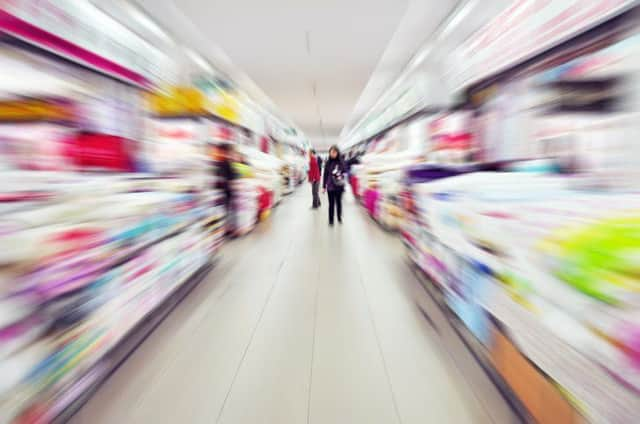Food costs remain low amid supermarket price war


However, a record run of falling food prices will come as a blow for supermarkets embroiled in a bitter price war as the major players fight for market share with discounters Lidl and Aldi.
The price of food and non-alcoholic beverages slumped by 2.7 per cent in July in the thirteenth month of decreases – the highest since records began in 1989 – according to official figures from the Office for National Statistics (ONS).
Advertisement
Hide AdAdvertisement
Hide AdThe data showed that the overall measure of inflation – the consumer price index (CPI) – was held back to just 0.1 per cent by major discounting in a bid to draw in consumers to the likes of Tesco and Sainsbury’s, which is struggling to compete with the German discounters’ stellar rise in popularity with cash-strapped shoppers. Yesterday, Asda reported its worst quarterly sales figures for the three months to June, reporting a 4.7 per cent slump, while Sainsbury’s said it would extend a price matching scheme to online orders. Meanwhile, separate figures from the Scottish Retail Consortium (SRC) also published yesterday, showed that food sales north of the Border dropped by 4.5 per cent last month – the poorest result for grocery items since the records began 16 years ago. Overall retail sales dipped by 0.4 per cent in Scotland in July, according to the SRC’s monthly Retail Sales Monitor.
David Lonsdale, director of the SRC, said: “There was a further and stark polarisation in the sales performance of non-food and grocery items, with sales of the former rising at their fastest rate since October. In contrast, grocery sales recorded their poorest results since the monitor started 16 years ago.”
David McCorquodale, head of retail at KPMG, which helped to compile the monitor, said that “deflation, weather and price promotions proved to be a nasty brew for the grocer and a tonic for the consumer. The tale of two markets continued in July with food and non-food pulling in different directions.”
The CPI rose slightly from June’s level of zero due to the weaker impact of summer clothing sales compared to last year, according to the official data from the Office for National Statistics. Richard Campbell, ONS head of CPI, said: “This is the sixth month running that headline inflation has been at or very close to zero.
“While households will have seen individual prices rise and fall, the overall shopping basket bought by the country remains little changed in price compared with a year ago. Food and motor fuel prices continued to fall and helped stop a larger rise in inflation.”